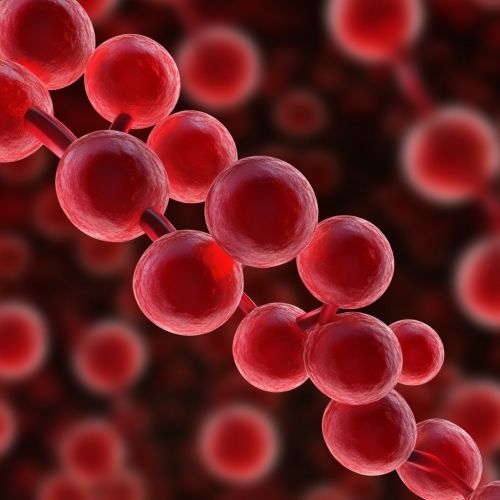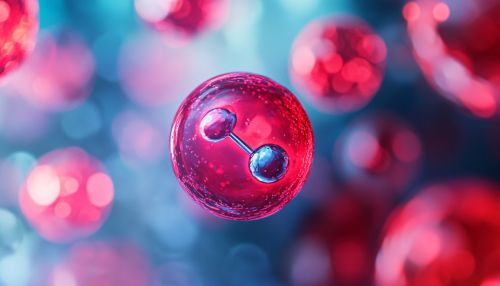Ligands
Introduction
A ligand is a molecule that binds to another (usually larger) molecule. In the field of coordination chemistry, ligands are ions or molecules that bind to a central metal atom to form a coordination complex. The nature of the ligand-metal bond can range from covalent to ionic, and the bond order can range from one to three. Ligands are essential in many biological processes and are also used extensively in industrial applications.
Types of Ligands
Ligands can be classified based on several criteria, including their charge, the number of donor atoms, and the nature of their bonding with the central atom.
Based on Charge
- **Neutral Ligands**: These ligands do not carry any charge. Examples include water (H₂O), ammonia (NH₃), and carbon monoxide (CO).
- **Anionic Ligands**: These ligands carry a negative charge. Examples include chloride (Cl⁻), hydroxide (OH⁻), and cyanide (CN⁻).
- **Cationic Ligands**: These ligands carry a positive charge, although they are less common. An example is the nitrosonium ion (NO⁺).
Based on Donor Atoms
- **Monodentate Ligands**: These ligands have only one donor atom that binds to the central atom. Examples include chloride (Cl⁻) and ammonia (NH₃).
- **Bidentate Ligands**: These ligands have two donor atoms that can bind to the central atom. An example is ethylenediamine (en).
- **Polydentate Ligands**: These ligands have multiple donor atoms. An example is ethylenediaminetetraacetic acid (EDTA), which has six donor atoms.
Based on Bonding Nature
- **Sigma Donor Ligands**: These ligands donate electron density through a sigma bond. Examples include ammonia (NH₃) and water (H₂O).
- **Pi Donor Ligands**: These ligands donate electron density through a pi bond. Examples include halides and alkoxides.
- **Pi Acceptor Ligands**: These ligands accept electron density through a pi bond. Examples include carbon monoxide (CO) and phosphines.
Coordination Chemistry
In coordination chemistry, ligands play a crucial role in determining the properties and reactivity of the coordination complex. The coordination number of a metal ion is the number of ligand donor atoms to which the metal is directly bonded. Common coordination numbers are 2, 4, and 6, but higher coordination numbers are also possible.
Ligand Field Theory
Ligand field theory (LFT) is an extension of crystal field theory (CFT) that considers the effects of ligand fields on the d-orbitals of the central metal atom. LFT provides a more comprehensive understanding of the electronic structure and properties of coordination complexes.
Chelation
Chelation is the process by which a polydentate ligand forms multiple bonds with a single central atom. Chelating ligands, such as EDTA, can form very stable complexes with metal ions. This stability is due to the formation of ring structures, which reduce the entropy of the system.
Biological Ligands
Ligands play a vital role in biological systems. They are involved in various processes, including enzyme activity, signal transduction, and oxygen transport.
Enzyme Cofactors
Many enzymes require metal ions as cofactors for their activity. These metal ions are often coordinated by ligands within the enzyme. For example, the enzyme carbonic anhydrase contains a zinc ion coordinated by three histidine residues.
Signal Transduction
In signal transduction, ligands such as hormones and neurotransmitters bind to specific receptors on the surface of cells, triggering a cascade of biochemical events. For example, the binding of insulin to its receptor initiates a series of reactions that regulate glucose uptake.
Oxygen Transport
Hemoglobin and myoglobin are proteins that transport oxygen in the blood and muscle tissues, respectively. The oxygen molecule binds to an iron ion in the heme group, which is coordinated by a porphyrin ligand.


Industrial Applications
Ligands are widely used in industrial applications, particularly in catalysis and materials science.
Catalysis
Ligands are essential components of many catalysts used in industrial processes. For example, phosphine ligands are used in homogeneous catalysis to stabilize transition metal complexes and enhance their reactivity. The Wilkinson's catalyst, which is used for hydrogenation reactions, contains a rhodium center coordinated by triphenylphosphine ligands.
Materials Science
In materials science, ligands are used to modify the properties of materials. For example, ligand exchange reactions can be used to functionalize the surface of nanoparticles, enhancing their stability and dispersibility in various solvents.
Ligand Design
The design of ligands is a critical aspect of coordination chemistry and catalysis. Ligand design involves tailoring the electronic and steric properties of the ligand to achieve desired reactivity and selectivity.
Electronic Effects
The electronic properties of a ligand can significantly influence the reactivity of the coordination complex. Electron-donating ligands can increase the electron density on the metal center, enhancing its nucleophilicity. Conversely, electron-withdrawing ligands can decrease the electron density, making the metal center more electrophilic.
Steric Effects
Steric effects refer to the spatial arrangement of atoms within a ligand. Bulky ligands can prevent unwanted side reactions by blocking access to the metal center. Steric effects can also influence the geometry of the coordination complex, which can affect its reactivity.
